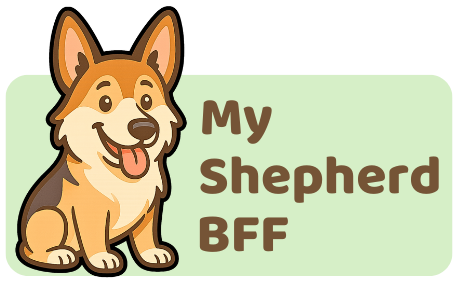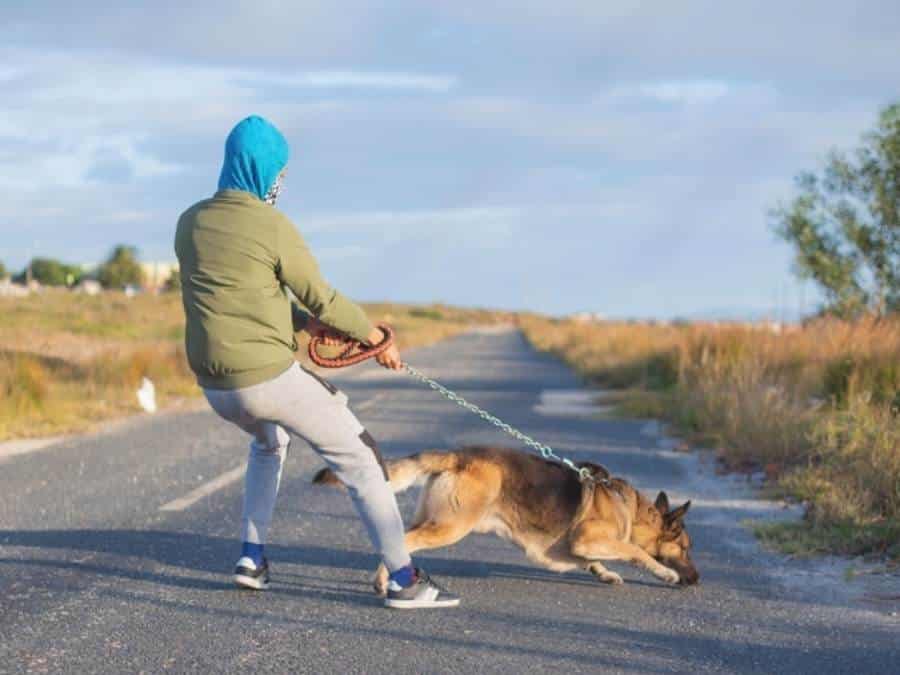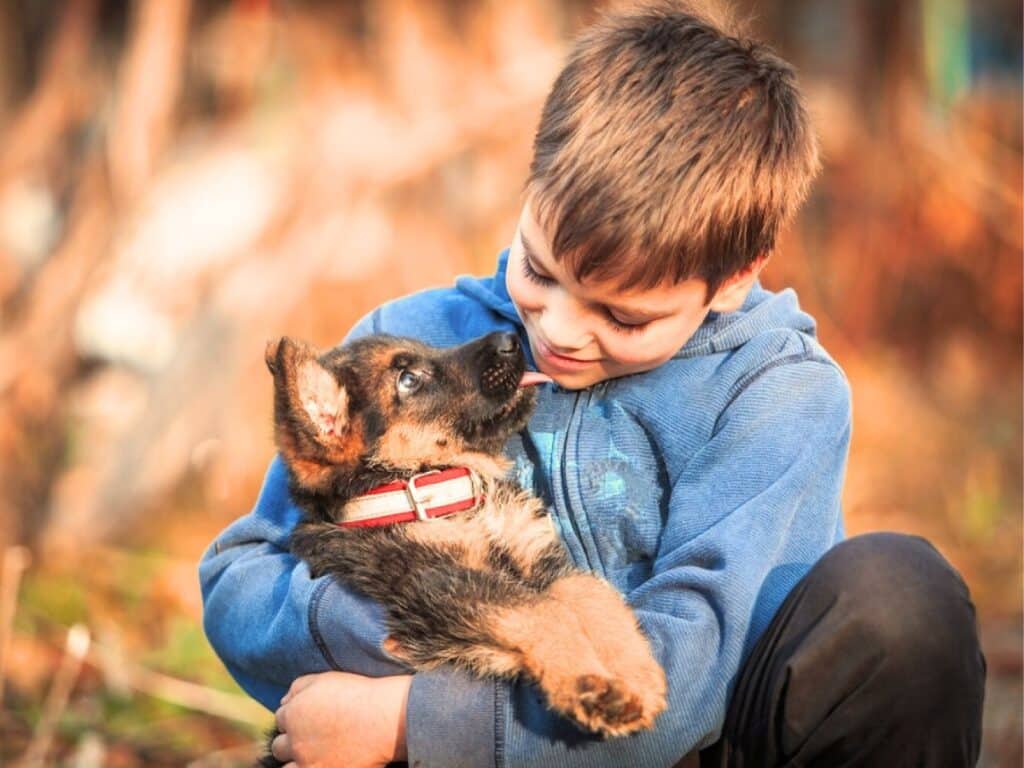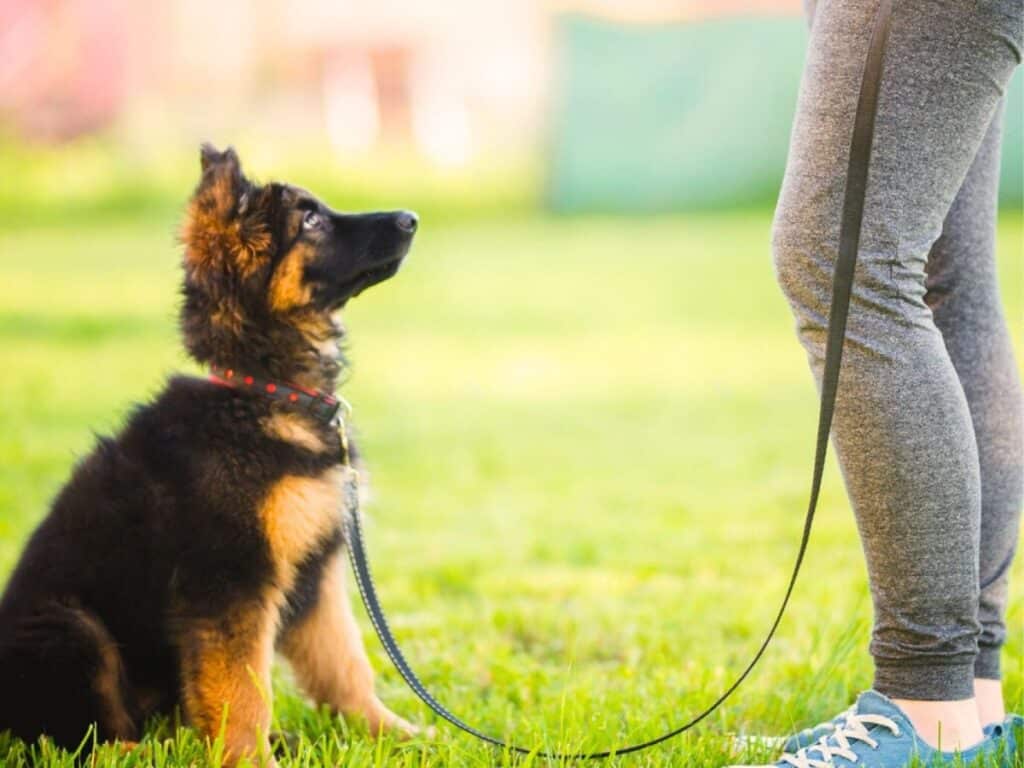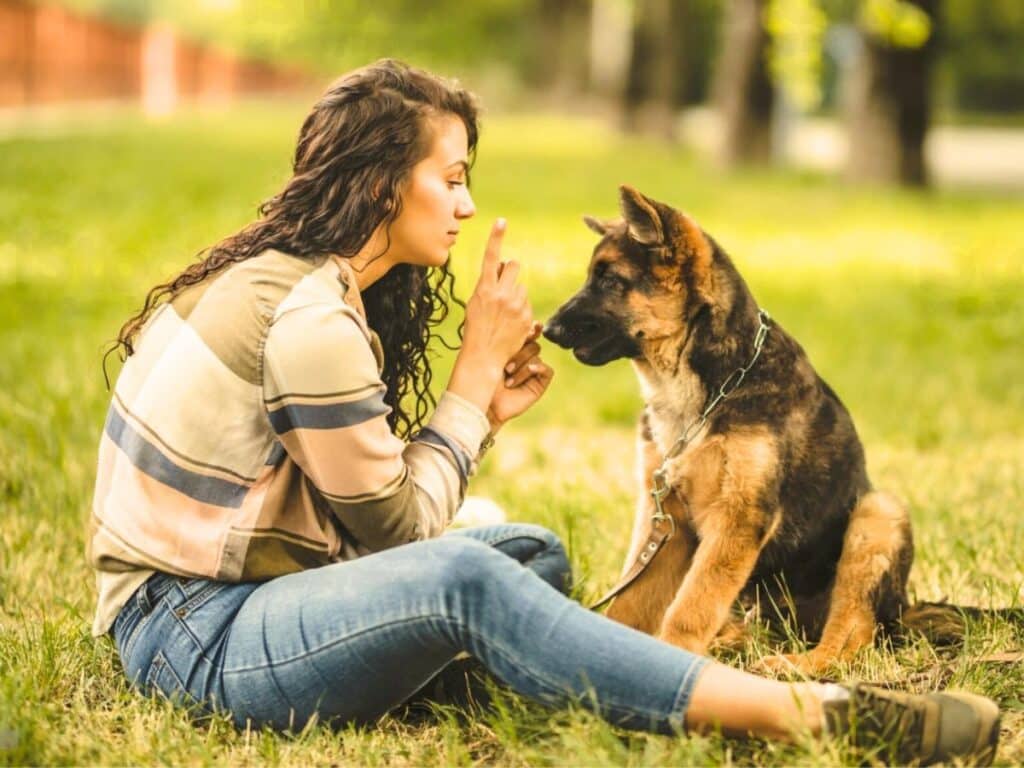How To Stop a German Shepherd From Pulling on The Leash? Is your German Shepherd constantly tugging on the leash, making walks a struggle? You’re not alone.
Leash pulling is a widespread behavior issue among these intelligent and energetic dogs. Dealing with it can be both frustrating and challenging.
To effectively address this problem, it’s essential to comprehend the reasons behind leash pulling. By understanding why your German Shepherd engages in this behavior, you can implement effective training techniques that will bring about lasting change.
Reasons behind leash-pulling behavior in German Shepherds
Leash-pulling behavior can be frustrating and even dangerous if not addressed properly. Understanding the reasons behind this behavior is crucial in order to effectively stop a German Shepherd from pulling on the leash.
1. Excitement and high energy levels can contribute to leash pulling.
German Shepherds are naturally energetic dogs with boundless enthusiasm.
When they see or sense something exciting, such as other animals, people, or even new environments, their excitement can trigger them to pull on the leash.
This behavior is often a result of their strong prey drive and desire to explore their surroundings.
To address this issue, it’s important to provide your German Shepherd with plenty of physical and mental exercise before taking them for a walk.
Engaging in activities like playing fetch or obedience training can help drain excess energy and reduce the likelihood of excessive pulling.
Using a front-clip harness instead of a traditional collar or back-clip harness can give you more control over your dog’s movements.
2. Lack of proper socialization and training may lead to leash pulling.
Proper socialization plays a vital role in shaping a dog’s behavior throughout its life.
If a German Shepherd hasn’t been exposed to various stimuli at an early age, they may become overwhelmed by new sights, sounds, and smells when on the leash.
This lack of exposure can cause anxiety or fear-based reactions that manifest as pulling. (Source)
To overcome this issue, gradually introduce your German Shepherd to different environments and experiences while they are still young.
Expose them to different types of people, animals, sounds, and objects so that they become familiar with these stimuli.
Positive reinforcement training techniques should also be employed during walks to reward calm behavior rather than reacting negatively when your dog pulls.
3. GSDs have a natural instinct to explore their surroundings.

German Shepherds are intelligent and curious dogs that possess an innate desire to investigate their environment.
This instinctual behavior can manifest as pulling on the leash as they try to reach interesting scents or sights.
It’s important to remember that this behavior is not necessarily a sign of disobedience but rather a reflection of their natural instincts.
To address this issue, implement consistent training techniques that teach your German Shepherd how to walk politely on a leash.
Use positive reinforcement methods such as treats or praise when they exhibit calm behavior and avoid punishments or corrections that may increase anxiety or stress.
Incorporating structured walks with clear rules and boundaries can help redirect their focus from pulling to following your lead.
RELATED: How To Stop German Shepherd Puppy From Biting
4. Reinforcement of pulling behavior
If a German Shepherd has learned that pulling on the leash results in getting to a desired location or receiving attention, they may continue the behavior.
Inadvertently rewarding pulling by allowing the dog to move forward despite pulling can reinforce this habit.
Step-by-step guide to stop German Shepherds from pulling on the leash

Yes, it’s true that with the right training techniques and consistency, you can teach your German Shepherd to walk calmly by your side.
Here’s a step-by-step guide to help you achieve that:
1. Teach your dog basic commands like “sit” and “stay.”
Before you start leash training, it’s important to establish a foundation of basic obedience commands.
Teaching your German Shepherd commands like “sit” and “stay” will help them understand boundaries and control their impulses.
To teach the “sit” command:
- Hold a treat close to your dog’s nose, then slowly move it upwards.
- As their head follows the treat, their bottom will naturally lower into a sitting position.
- Once they are seated, say “sit” and give them the treat as a reward.
Repeat this process several times until your German Shepherd learns to associate the word “sit” with the action.
If your dog is having trouble understanding your verbal cues in the beginning, then use a clicker to help.
RELATED: 30 German Shepherd Training Commands & Free PDF
2. Train your German Shepherd in loose leash walking.
Loose leash walking is a technique that teaches your dog to walk calmly beside you without pulling on the leash.
It is especially important for German Shepherds, as they are strong and energetic dogs that can easily overpower their owners if they pull on the leash.
By teaching your German Shepherd to walk on a loose leash, you are establishing yourself as the leader and setting boundaries for acceptable behavior. This helps to prevent leash pulling, as your dog learns that pulling is not allowed and will not be rewarded.
Additionally, loose leash walking provides mental and physical stimulation for your German Shepherd. It allows them to explore their surroundings and engage their senses, which can help prevent boredom and destructive behavior.
Regular walks also provide an opportunity for socialization, allowing your dog to interact with other dogs and people in a controlled environment.
To train your German Shepherd in loose leash walking, start by using a sturdy and comfortable leash and collar or harness.
Begin in a quiet and familiar environment, such as your backyard or a quiet park. Hold the leash with a relaxed grip and keep it loose, allowing your dog to explore within a certain radius.
Whenever your German Shepherd starts to pull on the leash, stop walking and wait for them to return to your side.
Once they are by your side again, reward them with praise or a treat. Repeat this process consistently, gradually increasing the duration and distance of your walks.
If you’re tired of being dragged around by your furry friend every time you go for a walk, you can check out this comprehensive dog training course, designed to help you regain control of your walks and eliminate the frustrating leash-pulling behavior once and for all.
3. Change direction when your dog starts pulling
When your dog starts to pull on the leash, abruptly change direction by turning around and walking in the opposite direction.
This sudden change in direction will catch your dog off guard and make them stop pulling. It is important to be consistent with this technique and change direction every time your dog starts to pull.
By doing so, you are teaching your dog that pulling on the leash will not get them where they want to go. This method helps to redirect your dog’s focus and keep their attention on you rather than pulling.
4. Use positive reinforcement techniques such as treats and praise during training sessions.

Positive reinforcement is an effective method for teaching dogs new behaviors. When leash training your German Shepherd, use rewards like treats or verbal praise to reinforce good behavior.
Here’s how:
- Start by putting a comfortable harness on your dog instead of using just a collar.
- Hold the leash firmly but not too tightly.
- Begin walking at a moderate pace while keeping your dog close beside you.
- If they start pulling ahead, stop walking immediately.
- Call out their name or use another attention-getting sound to redirect their focus back to you.
- Once they return their attention to you, reward them with treats or praise.
By consistently rewarding them when they exhibit desired behavior, such as walking without pulling on the leash, your German Shepherd will learn to associate good behavior with positive outcomes.
5. Gradually increase distractions while practicing loose-leash walking.
To ensure that your German Shepherd remains calm and focused on the walk, gradually introduce distractions during training sessions. This will help them learn to ignore external stimuli and maintain loose-leash walking.
Here’s how:
- Start training in a quiet environment with minimal distractions.
- As your dog becomes more comfortable walking without pulling, gradually expose them to more challenging situations.
- Practice in areas with mild distractions, such as a park or a street with light foot traffic.
- If they start pulling, change direction abruptly to regain their attention.
- Reward them when they respond appropriately and continue walking calmly by your side.
6. Use a no-pull harness or head halter
Consider using a no-pull harness or head halter specifically designed to discourage pulling. These tools can provide better control and redirect your dog’s attention if they start to pull.
However, it’s important to introduce and use these tools properly to ensure your dog’s comfort and safety.
The Rabbitgoo brand no-pull harness on Amazon is one of the best harnesses to control lead-pulling behavior in GSDs.
7. Engage your dog’s mind and body
GSDs are intelligent and active dogs, so ensure they receive enough physical exercise and mental stimulation.
Providing regular play sessions, interactive toys, and mental enrichment activities can help drain excess energy and reduce their desire to pull on the leash out of restlessness.
Remember, consistency is key when teaching your GSD to stop pulling on the leash. With patience and persistence, you can enjoy peaceful walks together without the constant struggle of tugging and pulling.
RELATED: How To Discipline A German Shepherd Puppy
Choosing the right collar and leash for leash training

To effectively stop a GSD from pulling on the leash, it’s crucial to choose the right collar or harness and leash that provide control without causing discomfort.
Here are some key factors to consider when selecting the perfect gear for your dog:
1. Opt for a sturdy collar or harness that provides control without causing discomfort.
Durability is paramount. German Shepherds are strong dogs with a tendency to pull, so opting for a sturdy collar is essential in preventing any mishaps during walks.
Look for collars made of high-quality materials such as nylon or leather, which can withstand the force exerted by your dog.
If using a collar, ensure it fits snugly around your German Shepherd’s neck without being too tight.
A loose collar may slip off, while one that’s too tight can cause discomfort and restrict breathing. Remember to regularly check the fit of the collar as your dog grows.
Alternatively, consider using a harness specifically designed to discourage pulling behaviors.
A no-pull harness distributes pressure evenly across your dog’s chest rather than their neck, reducing strain and potential injury risks.
This type of harness offers better control over your German Shepherd’s movements while ensuring their comfort throughout walks.
2. Consider using a front clip harness or head halter for better control over your dog’s movements.
Front clip harnesses are particularly effective in curbing pulling behavior as they redirect your German Shepherd’s attention towards you whenever they attempt to pull ahead.
By attaching the leash at the front of their chest instead of their back, these harnesses discourage forward movement and encourage them to walk beside you.
Another option worth considering is a head halter. Similar to how horse halters work, this device gently controls your dog’s head movements, giving you more control during walks.
Head halters are designed to guide your German Shepherd’s attention towards you, making it easier to redirect their focus and prevent pulling.
3. Choose a lightweight, durable, and non-retractable leash for better handling.
Selecting the right leash is just as crucial as choosing the appropriate collar or harness.
A lightweight leash ensures that walking your GSD doesn’t become a strenuous task for you.
Look for options made of materials like nylon or leather that offer both strength and flexibility.
Opt for a non-retractable leash to maintain better control over your dog’s movements. Retractable leashes can encourage pulling behavior as they allow your GSD to roam freely beyond the desired length.
By using a standard leash with a fixed length, you have greater control over their actions and can easily correct any pulling tendencies.
RELATED: Are German Shepherds Easy To Train?
Teaching basic commands while leashed

Teaching your GSD basic commands while they are leashed is an essential part of leash training. It not only helps in ensuring a controlled and enjoyable walking experience but also strengthens the bond between you and your furry friend.
Here are some effective techniques to teach basic commands during regular walks:
1. Consistent verbal cues and hand signals
Using consistent verbal cues paired with hand signals can significantly enhance communication with your dog.
This approach enables them to understand your expectations more clearly, even when distractions are present.
For instance, when teaching the “heel” command, say the word “heel” firmly while holding the leash hand close to your body. Simultaneously, use a hand signal by extending your arm straight down, palm facing backward.
When you give your dog verbal cues, keep them to a single word.
2. Practice makes perfect
Regular training sessions during walks are crucial for reinforcing basic commands such as “leave it” or “heel.” Begin indoors or in a quiet area with minimal distractions before gradually progressing to more challenging environments like busy streets or parks.
By consistently practicing these commands in various settings, you help familiarize your German Shepherd with different scenarios they may encounter during walks.
3. Reward-based training methods
Positive reinforcement is a key aspect of obedience training for any dog breed, including German Shepherds.
When your pup responds correctly to a command like “leave it” or “heel,” reward them immediately with praise, treats, or both. This reinforces their understanding that obeying commands leads to positive outcomes.
To effectively utilize rewards during training sessions:
- Choose high-value treats that motivate and excite your pet.
- Keep treats easily accessible in a treat pouch or pocket.
- Use verbal praise and enthusiastic body language along with treats to reinforce good behavior.
- Gradually reduce the frequency of treat rewards as your dog becomes more consistent in following commands.
4. Patience and consistency
Training takes time and patience, especially when teaching your GSD to walk on a loose leash.
It is essential to remain consistent in your approach and expectations. Inconsistency can confuse your pet and hinder their progress.
Remember these key points during training sessions:
- Use clear, concise commands that are easy for your dog to understand.
- Practice the same commands consistently throughout each training session.
- Be patient with your pup’s learning process, as it may take time for them to grasp the concepts fully.
Remember that every dog learns at their own pace, so be sure to tailor the training methods to suit your pup’s individual needs and abilities.
Effective techniques to discourage leash pulling in German Shepherds

With the right techniques and consistent training, you can teach your furry friend to walk calmly beside you without constantly tugging on the leash.
Here are some effective strategies to discourage leash pulling in German Shepherds:
1. Stop walking whenever your dog starts pulling
One of the most effective ways to discourage leash pulling is by stopping whenever your dog starts pulling ahead. By abruptly halting your movement, you send a clear message that pulling will not be rewarded with forward progress.
This technique encourages your GSD to come back towards you and releases tension on the leash.
2. Use directional changes or quick stops
Another technique that can help deter leash pulling is using directional changes or quick stops when your dog pulls on the leash. Instead of allowing them to continue in their desired direction, change course suddenly or come to an immediate stop.
This unexpected change interrupts their momentum and reinforces that they should stay close by rather than forging ahead.
3. Engage in Mental and Physical Exercise
Ensure your German Shepherd receives ample physical exercise and mental stimulation. A tired dog is less likely to pull on the leash out of excess energy.
Engage in activities such as fetch, obedience training, puzzle toys, or interactive play to keep their mind and body active.
4. “Leave It” Command
Teach your German Shepherd the “leave it” command. This command can redirect their attention from distractions that may trigger pulling.
When you encounter something that might cause your dog to pull, give the “leave it” command and reward them for responding appropriately.
5. Utilize positive reinforcement
Positive reinforcement is a powerful toolIncluding German Shepherds. When your furry companion walks calmly beside you without pulling on the leash, reward them with praise, treats, or a favorite toy.
This positive association helps them understand that walking politely by your side leads to pleasant rewards.
To effectively utilize positive reinforcement:
- Carry small treats in your pocket during walks.
- Whenever your dog walks calmly beside you without pulling, offer verbal praise such as “Good job!” or “Well done!”
- Give them a treat as an extra reward for their good behavior.
- Consistency is key – repeat this process every time they exhibit calm behavior while walking.
By consistently rewarding good behavior and ignoring unwanted behaviors like leash pulling, you reinforce the desired behavior and motivate your German Shepherd to continue walking calmly by your side.
Adding Difficulty to Leash Training for Long-Term Success
Once you have mastered the basics of leash training, it’s important to add difficulty gradually to ensure long-term success.
By introducing more challenging environments and practicing walking past distractions, you can help your German Shepherd become a well-behaved companion on any outing.
1. Gradually introduce more challenging environments during training sessions
To prevent your German Shepherd from pulling on the leash in various situations, it’s crucial to expose them to different environments gradually.
Start with quiet areas such as your backyard or a calm street before progressing to busier locations like parks or bustling city streets.
By incrementally increasing the difficulty level, you allow your dog to adapt and build confidence while remaining under control. This method prevents overwhelming them and helps create positive associations with new surroundings.
2. Practice walking past distractions, gradually increasing the difficulty level
Distractions are a common trigger for pulling behavior in dogs. To address this issue, incorporate distraction training into your leash sessions.
Begin by exposing your German Shepherd to mild distractions like other dogs at a distance or people walking by.
As they become more comfortable, slowly decrease the distance between your dog and the distraction, making sure they maintain focus on you rather than fixating on the distraction.
Over time, you can increase the intensity of distractions by introducing more tempting stimuli like squirrel or bicycles.
Remember to use positive reinforcement techniques throughout this process. Rewarding good behavior with treats or praise will encourage your German Shepherd to stay focused on you even when faced with enticing distractions.
3. Incorporate obedience training exercises into your walks
During walks, practice basic commands such as “sit,” “stay,” or “heel.” By intermittently asking your dog to perform these commands, you reinforce their obedience and keep their attention on you.
This helps establish a strong bond between you and your German Shepherd, making them more responsive to your cues.
Using the reward method of positive reinforcement, praise and reward your dog whenever they respond correctly to a command.
Overcoming challenges and frustration during leash training
While it’s natural for dogs to pull on the leash due to their instinctual behavior, it’s essential to teach them proper leash manners for a pleasant walking experience. Here are some tips to help you overcome challenges and frustration during leash training.
1. Stay patient and consistent with your training efforts
Patience is key. Understand that this process takes time, and every dog learns at their own pace. Avoid getting frustrated or losing your temper, as this may hinder progress.
Consistency is equally important. Use the same commands consistently throughout the training sessions.
For example, use phrases like “heel” or “walk nicely” when you want your dog to stay by your side without pulling. Reinforce positive behavior with treats or praise, which will motivate your German Shepherd to continue behaving well on the leash.
2. Seek professional help if you encounter difficulties in leash training
If you find yourself struggling with leash training despite your best efforts, don’t hesitate to seek professional help.
A certified dog trainer who specializes in obedience training can provide valuable guidance tailored specifically for German Shepherds.
Professional trainers have experience dealing with various behavioral issues, including pulling on the leash. They can assess your dog’s specific needs and develop a customized training plan that addresses any challenges you may be facing.
3. Take breaks when needed to prevent frustration from escalating
Leash training can sometimes be frustrating for both you and your German Shepherd. It’s important to recognize when either of you needs a break before tensions rise.
If you notice signs of frustration or fatigue in yourself or your dog during a training session, take a short break.
Step away from the situation and engage in an activity that helps calm both of you down. This could include playing a game together or simply taking some time to relax.
Remember, training should be a positive experience for both you and your German Shepherd. Taking breaks when needed will help maintain a healthy and enjoyable atmosphere during leash training sessions.
4. Distractions: A common challenge during leash training
Distractions can make leash training more challenging, especially for energetic breeds like German Shepherds. It’s important to gradually expose your dog to distractions while reinforcing their focus on you.
Start in a quiet environment where there are minimal distractions. Once your German Shepherd has mastered walking nicely on the leash in this controlled setting, gradually introduce mild distractions such as other dogs or people at a distance. As your dog becomes more comfortable, increase the level of distraction gradually.
Remember to reward your German Shepherd with treats or praise when they successfully maintain focus despite distractions. This positive reinforcement will reinforce the desired behavior and encourage them to stay focused even in distracting situations.
Conclusion
In conclusion, by understanding the reasons behind leash-pulling behavior in German Shepherds and applying the provided strategies, you can successfully stop your dog from pulling on the leash. Remember to remain patient, consistent, and positive throughout the process. With patience, consistency, and proper training methods, you’ll soon enjoy peaceful walks with your well-behaved companion. Take action today! Start implementing these techniques right away to enjoy peaceful walks with your well-behaved German Shepherd.
Frequently Asked Questions (FAQs)
1. How long does it take to stop a German Shepherd from pulling on the leash?
The duration may vary depending on factors such as consistency in training, individual temperament of the dog, and previous experiences. With dedicated effort, progress can be seen within a few weeks or months.
2. Can using certain collars harm my German Shepherd?
It is important to choose collars that are safe and comfortable for your dog. Avoid harsh methods or equipment that may cause pain or injury. Opt for harnesses or head halters designed specifically for gentle control.
3. My German Shepherd gets easily distracted during walks. What should I do?
Gradually introduce distractions during walks once your dog has mastered basic commands while leashed. Start with mild distractions such as low-traffic areas and gradually progress to more stimulating environments. Consistency and positive reinforcement will help your dog stay focused.
4. Are there any specific commands that can help with leash training?
Yes, teaching commands such as “heel” or “leave it” can be beneficial for leash training. These commands provide clear instructions to your German Shepherd and reinforce good behavior while walking on a leash.
5. Can I seek professional help for leash training my German Shepherd?
Absolutely! If you’re facing challenges or struggling with leash training, consulting a professional dog trainer experienced in working with German Shepherds can provide valuable guidance and support.
